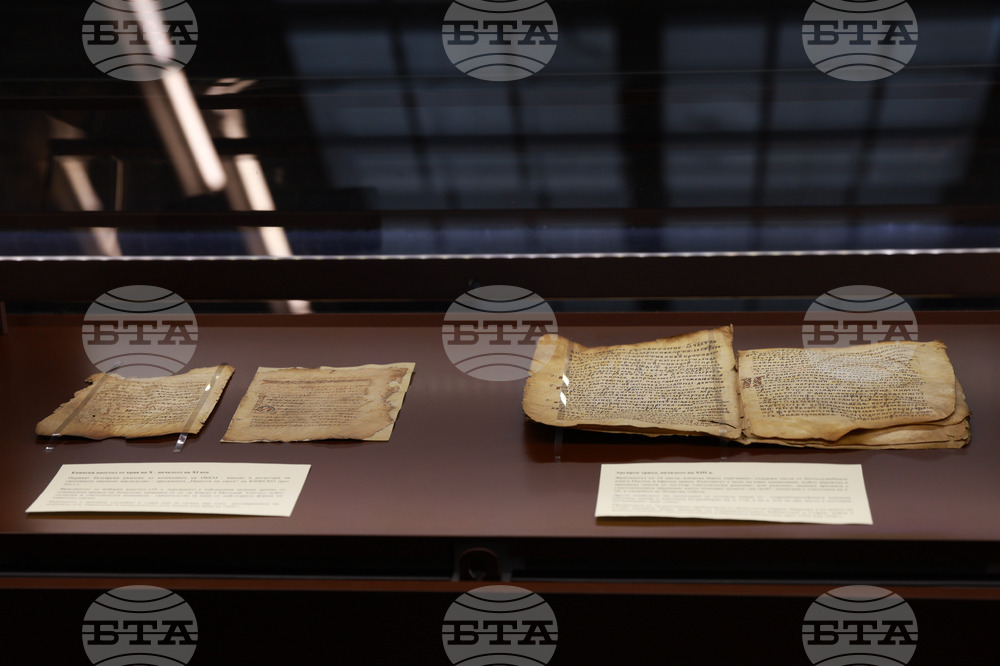site.btaNot a Single Glagolitic Manuscript Has Survived in Bulgaria - National Library


Not a single Glagolitic manuscript has survived in Bulgaria, Prof. Elissaveta Moussakova from the Sts. Cyril and Methodius National Library said Monday. In her words, those that have survived are kept in foreign repositories in various places around the world. Two partly Glagolitic manuscripts that have remained in Bulgaria are the Enina Apostolos and the Argirov Triodion.
Earlier in the day, the Enina Apostolos and Argirov Triodion were exhibited in the National Library for two hours to mark the 1170th anniversary of the creation of the Bulgarian alphabet and Slavic literacy. "These two manuscripts contain small remnants of the Glagolitic script, which, as we all know, is considered a unique creation of Constantine the Philosopher, or Saint Cyril," said Prof. Moussakova, who is a chief archivist for old print books at the National Library. Both manuscripts, were written on parchment, which is sensitive to changes in temperature and humidity, she explained.
"Actually, there is a big controversy regarding the year in which the first Slavic alphabet was created. According to Byzantine chronology, this year marks 1170 years since the creation of the Slavonic alphabet. But according to the Alexandrian one, which was also used in the Middle Ages, the year is different," the professor said.
Moussakova further mentioned that the Enina Apostolos manuscript combines Cyrillic script with elements of Glagolitic which suggests the possibility that this Cyrillic manuscript was modeled after a Glagolitic one. In the Argirov Triodion, there are only two words written in Glagolitic, indicating that this manuscript either originated from a Glagolitic script or was influenced by an earlier Cyrillic manuscript containing Glagolitic remnants.
The Enina Apostolos was discovered by chance in the late 1960s during the renovation of the St. Petka Church in the village of Enina, near Kazanlak (Central Bulgaria). Among the construction debris, something unusual was found, which later turned out to be leather leaves.
As for the Argirov Triodion, it was brought to the library by the then-director of the university library, Stoyan Argirov, and the manuscript is named after him.
“Other notable objects, from this perspective, include a fragment preserved in the Bulgarian Academy of Sciences (BAS) archive and the famous Psalter of Tsar Ivan Alexander, also held in the BAS archive, which contains some psalm numbers written in Glagolitic. This Psalter dates from 1337, showing that Glagolitic was known until at least the 14th century. In some manuscripts, such as one in the Zograf Monastery, Glagolitic was even used like a secret script, known only to a select few, or it was used decoratively to distinguish it from Cyrillic,” explained Moussakova.
/RY/
Additional
news.modal.image.header
news.modal.image.text
news.modal.download.header
news.modal.download.text
news.modal.header
news.modal.text








